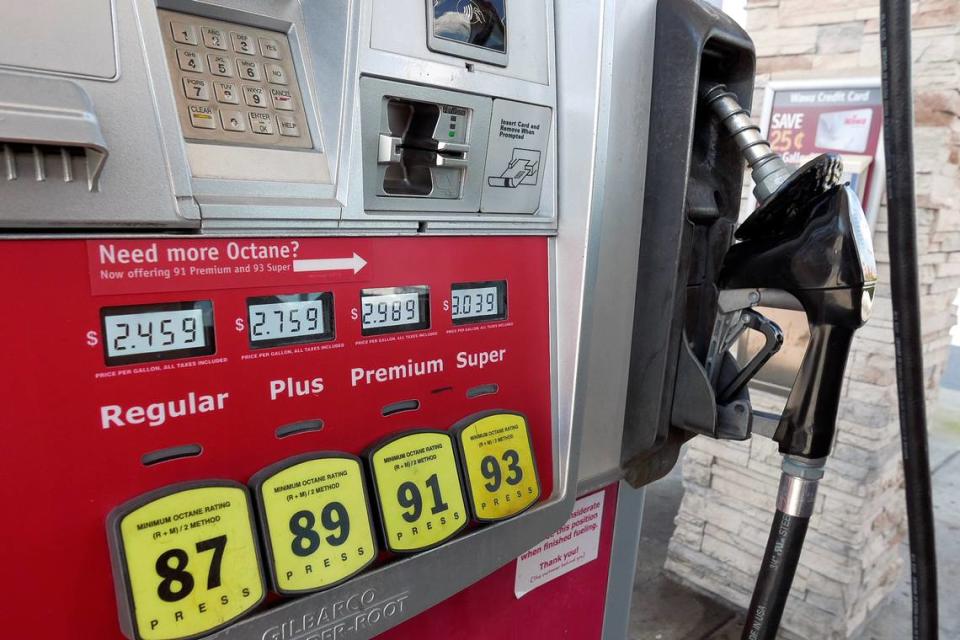Octane booster? Fuel stabilizer? Here’s what Idaho drivers need to know to save gas
Gas prices in the northwest continue to sit above the national average, according to AAA, as prices nationwide continually increase to new record highs.
The average price of regular unleaded gas in Idaho was $4.65 per gallon Tuesday, 66 cents above the national average. This time last year, gas was just $3.24 in the Gem State. The same can be said for other states like Washington, where gas is even more expensive. The average price of gas in the state on Tuesday was $5.20, compared to $3.56 this time last year.
The continued increase in gas prices has led to many Americans looking for ways to reduce dependability on gas, but sometimes driving is the only option.
When that’s the case, there are still ways to help reduce gas usage: Octane boosters and fuel stabilizers.
Let’s break them down.
What is an octane booster?
Have you ever wondered what those numbers are at the gas pump whenever you’re selecting what type of gas to put into your car? They usually range between 87 and 94.

That’s the octane rating, which indicates how stable the fuel is. A higher stability rating means the fuel can withstand a higher pressure level before spontaneous combustion.
Once all your fuel combusts? Back to the fuel pump for another expensive fill-up.
Octane booster is typically poured straight into the fuel tank and raises the octane rating of gas, meaning you can drive farther before all of the fuel combusts and you need another fill-up. Octane booster also has several other benefits for your car, such as helping to clean out the combustion chamber and fuel lines of your vehicle and reducing engine knock.
Octane booster can be purchased from various locations, including Amazon, AMSOIL and Walmart.
What is a fuel stabilizer?
When fuel is left stagnant in your engine for too long — typically over a month by the time it’s been refined and pumped into your car — it can start to break down and allow unwanted contaminants into your fuel and engine.
Fuel stabilizer isn’t required if you drive regularly. But if you’re trying to save money and think gas will sit in your vehicle for a long time, a fuel stabilizer will help the gas last longer, not damage your engine, and ultimately mean fewer trips to the gas station.
Fuel stabilizers are available for as little as $5.37 on Amazon, Walmart and Lowe’s, among other places.
Other ways to save gas
AAA also provides a list of the top 10 ways you can save fuel without having to put anything into your car:
Plan your trips to minimize unnecessary turnarounds and avoid peak traffic times.
Watch your speed. Fuel economy peaks around 50 mph, meaning reducing highway speeds by 5 to 10 mph can increase your fuel economy by 14%.
Avoid accelerating quickly and hard braking. Doing so can lower fuel economy by 40% in stop-and-go traffic.
Turn off your engine if you expect to be idle for a while. A warm engine takes approximately 10 seconds worth of fuel to turn on, while an idling engine will use up fuel the whole time.
Use a fast pass on toll roads to eliminate tollbooth slowdowns and stops.
Avoid rush hour to help minimize stop-starts and idle time.
Try and time stoplights to maintain speed and avoid stop-starts.
Use cruise control on the highway. Driving at a consistent speed helps save gas.
Practice upshifting as soon as possible for those driving a manual transmission, and do not downshift to slow the car.
In cold weather, drive to warm the engine rather than letting it sit idle. Driving is the quickest way to warm the engine up to operating temperature and save gas.

 Yahoo Movies
Yahoo Movies 